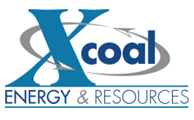
 











|
Signature Sponsor


November 23, 2025 - A decisive shift in Wyoming coal mining policy is underway. On Thursday, the U.S. Senate voted 51–43 to overturn the Biden administration’s federal leasing halt in the Powder River Basin, home to nearly 40% of U.S. coal production. The reversal — now headed to President Donald Trump for signature — would not only restart leasing in Wyoming but make it illegal for future administrations to block coal access in the region, cementing a long-term shift in U.S. energy strategy. This is more than a policy reversal — it marks a strategic test of whether Wyoming coal mining policy can drive real production growth amid declining demand and the rise of gas and renewables. Powder River Basin at the Center of Wyoming Coal Mining PolicyThe Powder River Basin has long been the backbone of Wyoming coal mining policy. But in the final months of Biden’s presidency, the Interior Department halted new federal coal lease sales, citing:
According to U.S. EIA data, more than 300 U.S. coal plants have been retired or converted in the last two decades. Even during Trump’s first term — openly supportive of coal — annual production in the Basin fell from 400 million to roughly 200 million tons. Recent lease auctions in Wyoming and Utah saw low bidder interest and bids rejected by federal land managers due to inadequate pricing. That raises a crucial question: Political Victory vs. Economic RealityWyoming’s congressional delegation — Harriet Hageman, John Barrasso, and Cynthia Lummis — positioned the bill as a defense of local jobs and energy security. Governor Mark Gordon praised the outcome, saying Wyoming “fought back against federal overreach” and preserved the future of coal. Yet industry analysts are wary. A restored Wyoming coal mining policy does not necessarily translate into fresh contracts. The utilities sector is accelerating into:
Major U.S. utilities — including Duke Energy, PacifiCorp and Xcel Energy — have already published public roadmaps to phase down coal exposure by 2030. Environmental Pushback and Regulatory Conflict AheadThe Center for Biological Diversity warned that the reversal of Wyoming coal mining policy sidelines the expertise of federal land managers. Environmental groups argue that pollution liability, reclamation costs, and EPA Cross-State Rule compliance will make coal increasingly difficult to finance. “Republicans are going out of their way to block basic environmental protections and burden our public lands with more pollution,” said Ashley Nunes from the Center. Skillings Analysis — What Mining Leaders Must WatchSkillings Editorial Take
What’s Next: Q1 2026 Will Test the New PolicyMining executives expect Wyoming coal mining policy to influence utility decisions over the winter demand cycle and Q1 procurement stages. The next six months will show whether the industry can capitalize — or whether this move becomes a symbolic policy win without production traction. If contracts don’t materialize by mid-2026, the Powder River Basin could face another round of asset write-downs, putting pressure on state revenue and mine employment levels. For now, the sector is optimistic — but the market, not the Senate, will be the judge. |
 








|